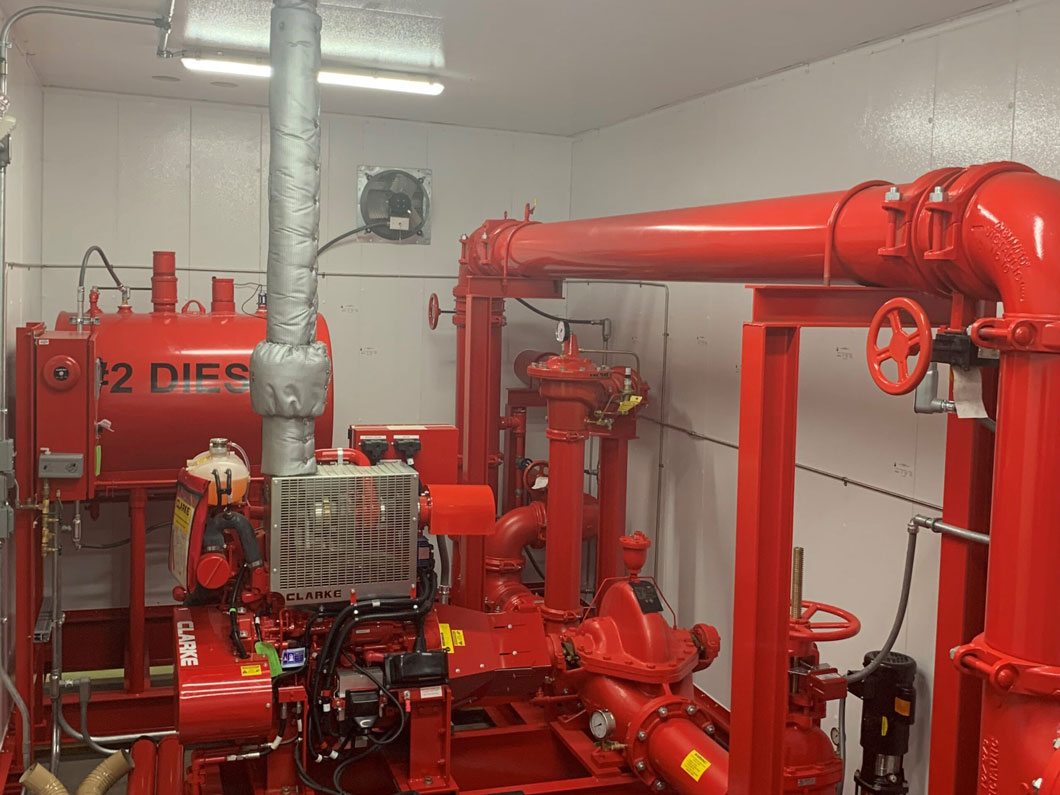
Pump professionals see various levels of maintenance performed during travels. This ranges from a pristine fire pump room with detailed maintenance plans and records to a facility where the run hours on the fire pump reflect only the initial startup. It creates an interesting challenge that requires continuous training and promotion to get some people to take maintenance of life safety equipment seriously.
A commonly misunderstood aspect of fire pump maintenance is the maintenance and adjustment of the pump packing seals. This includes details on why packing is used, whether packing should leak, when packing should be replaced and the adjustment of packing over time.
The first questions of why packing is used on fire pumps and whether or not mechanical seals can be used as an alternate arise from time to time. The simple answer is no. The first consideration results from the fact that these pumps are life safety devices that should be Underwriters Laboratories (UL) listed and/or factory manual (FM) approved. Those standards require packing to be used as the sealing method.
A deeper explanation is that mechanical seals tend to have a failure mode that results in the pump being inoperable. In a life safety system, this is not acceptable. Packing tends to fail over time and in a worst-case scenario, a packed pump could still provide a degree of fire protection.
The next important topic is managing to keep the packing at that happy medium where it drips approximately a drop per second and does not spray all over the pump room. When a new pump is installed, this can require continued adjustment as the packing swells and wears initially. The best time to accomplish this is during the weekly or monthly maintenance runs as recommended in National Fire Protection Association (NFPA) 25. Packing is best adjusted while a pump is running to find a balance between leakage and temperature. It remains a maintenance task that requires observation and judgment over the life of the pump. At some point, adjustment of the packing will no longer be possible and at that time, maintenance should be performed.
The replacement of a pump’s packing is typically referred to as repacking the pump. This is accomplished in different ways and the method can vary depending on the pump construction. The repacking of a pump can also vary depending on the style of fire pump in place. A vertical turbine and vertical inline pump have similar methods of repacking. The repacking of these pumps can typically be accomplished without removing large components in the field. This detail does limit the ability to do much of an inspection on the inner workings of these styles of pumps.
One of the most common styles of pumps in use as fire pumps is a horizontal split case pump. The typical construction of these pumps can vary between manufacturers and these variances can determine which method is used to repack a pump. An accepted method of repacking a horizontal split case pump requires the removal of the top half of the pump case. The removal of this component allows for a more complete view of the internal components of the pump and affords ample access to the stuffing box area where the packing rings are installed. This is dependent on the manufacturer as there can be some internal construction differences. When the top of the pump is removed, the impeller can be viewed to see if it is experiencing abnormal wear and centered properly. The shaft sleeves can be inspected for wear as they can be a cause of packing that is no longer adjustable. This method also makes the removal and install of the packing rings, and lantern rings when present, easier.
Most manufacturers provide pre-cut packing rings. It is a recommended practice to offset the splits of the packing rings to prevent the creation of a channel that the water can easily pass through. When the top of the case is removed, this process is also easier. Placing the split of the packing rings alternately between the 4 o’clock and 8 o’clock position allows the ends of the packing rings to be secured in the lower case when the top half of the case is reinstalled. The case gasket should also be replaced at this time.
Most manufacturers provide kits for repacking fire pumps. These kits can also include hardware for the glands that compress the packing. This is a good time to replace those components as needed. When inspecting and maintaining fire pumps, it is a common practice to apply a spray-on oil to the gland hardware as the proximity of moisture to these components can corrode them and create issues with future maintenance. After the pump is properly repacked and reassembled, it needs to be run in order to adjust the packing and verify proper operation as detailed in NFPA 25. The final adjustment of packing rings happens over time as the packing swells and wears. The routine maintenance runs afford this opportunity. If routine maintenance runs of fire pumps are not accomplished, repeat trips to repack pumps will likely occur in greater frequency. Maintenance instructions will vary between manufacturers and specific installation and operation manuals should be consulted.


